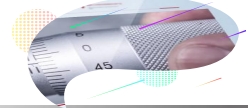Introduction
4140 alloy steel, due to its excellent mechanical properties, has found widespread applications in fields such as automotive, chemical, and engineering machinery. Traditional processing methods for 4140 alloy steel involve casting and forging, which can be challenging for the fabrication of complex small parts. However, employing the Metal Injection Molding (MIM) process to produce 4140 alloy steel offers advantages such as high material utilization, low cost, and uniform microstructure.

key mechanical properties of steel 4140
- Tensile Strength: The tensile strength of steel 4140 is typically around 95,000 psi, making it a strong and durable material for various applications.
- Yield Strength: Steel 4140 has a yield strength of approximately 60,000 psi. This refers to the amount of stress that can be applied to the material before it begins to deform permanently.
- Elastic Modulus: The elastic modulus, also known as Young’s modulus, of steel 4140 is around 29 million psi. This property measures the material’s stiffness and its ability to return to its original shape after being deformed under stress.
- Wear Resistance: This property comes from their hardness, often over HRC 50, due to the alloy’s makeup and heat treatment. The fine microstructure from the metal injection molding (MIM) process also boosts wear resistance.
- Ductility: Steel 4140 exhibits good ductility, meaning it can be stretched or bent without breaking. This property is essential in applications where the material may undergo bending or forming processes.
- Toughness: The toughness of steel 4140 refers to its ability to absorb energy before fracturing. It has a good balance of strength and toughness, making it suitable for high-stress applications.
Composition Of MIM 4140 alloy steel
| Chemical Composition (Weight %) | Carbon (C) | Manganese (Mn) | Phosphorus(P) | Sulfur (S) | Chromium(Cr) | Molybdenum (Mo) | Iron (Fe) |
|---|---|---|---|---|---|---|---|
| Value | 0.38-0.43 | 0.75-1.00 | 0.035 (max) | 0.040 (max) | 0.80-1.10 | 0.15-0.25 | Balance |
MIM-4140 Low Alloy Steel Typical Properties
Project | as sintered | Heat treated |
|---|---|---|
| Density | >7.55 g/cm³ | |
Yield strength | >480MPa | >1500MPa |
Tensile strength | >680MPa | >650MPa |
| Elongation A10 | >5% | |
Hardness | >200 HV1 | >450HV1 |
Principal Characteristics and Uses of MIM-4140
| Key Features | Applications |
|---|---|
| High strength and toughness | Automotive Components |
| Good machinability | Machinery Parts |
| Good wear resistance | Tooling and Tool Components |
| Good corrosion resistance | Aerospace Components |
| Good surface finish after heat treatment | Firearms and Weapon Components |
| Excellent fatigue strength | Medical Instruments and Devices |
| Can be welded | Machine parts |
Heat Treatment of MIM 4140
MIM 4140 has the capability to be heat treated to a range of different strength levels, making it highly versatile in terms of its use in various industries. The most common heat treatment process for MIM 4140 is quenching and tempering, which involves heating the material above the critical temperature and then rapidly cooling it (quenching) followed by reheating it to a specific temperature (tempering). This process results in a material with high strength and hardness, while also maintaining good ductility.
Some other heat treatment processes that can be used for MIM 4140 include annealing, normalizing, and carburizing. Each of these processes has its own benefits and is chosen based on the specific application and desired material properties.

Dissipating Doubts: Common Queries about 4140 Steel
To fully appreciate the potential of 4140 steel, it’s critical to address common misconceptions and queries surrounding this alloy.
Is 4140 Steel Stainless?
4140 steel belongs to the 41xx series of alloy steels known for their high carbon content and good wear resistance. This makes it ideal for components that require a combination of strength and wear resistance.
Does 4140 Steel Rust?
Given the right conditions and absence of protective measures, 4140 steel, like any other ferrous material, is prone to rust. However, MIM 4140 parts are fashioned to mitigate such issues, ensuring that rust doesn’t tarnish the reputation of 4140 as a premier alloy steel.
How Hard Is 4140 Steel?
Through the magic of quenching and tempering, 4140 steel can achieve impressive levels of hardness often over HRC 50. These properties make it a go-to material for applications that demand hardness, strength, and abrasion resistance.
4140 VS 4340 Steel: The Differences to Know
Both 4140 and 4340 steels are popular choice s in the industry due to their excellent mechanical properties, but there are some key differences between them.
- Chemical Composition: While both alloys contain chromium and molybdenum, 4340 steel has a higher nickel content, giving it superior tensile strength and toughness compared to 4140 steel.
- Hardness: Due to its higher carbon content, 4340 steel can achieve a higher hardness compared to 4140 steel. However, this also makes it more difficult to weld and machine.
- Applications: 4140 steel is typically used in applications where high strength and toughness are required, such as gears, crankshafts, and structural components. 4340 steel is commonly used in applications that require even higher strength and toughness, such as aircraft landing gear and engine parts.
Conclusion: MIM 4140—A Beacon of Strength
The Metal Injection Molding (MIM) process combines high performance, complexity, and low cost, allowing for the low-cost manufacture of high-performance complex parts.

Discover Our Consultative Design Services
JunKun Custom Metal Injection Molding Service provides free Consultative Design Services throughout the process. It includes all processes from your design stage to mass-produced finished products.
1.Material Selection Consultation
2.Structural design service
3. Mold design service
4.MIM part manufacturing
Ready to unlock MIM 4140 Manufacturing’s potential for your project? Contact us to see how our advanced MIM technology can precisely, strongly, and efficiently turn your designs into reality.


